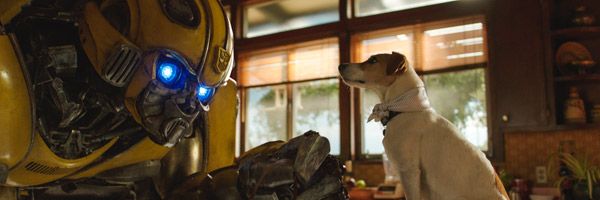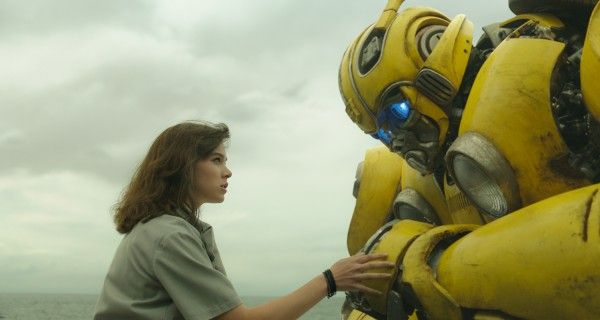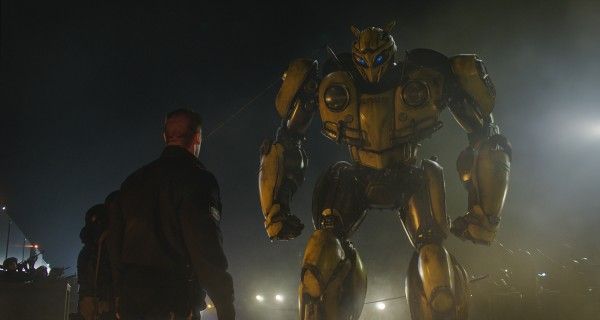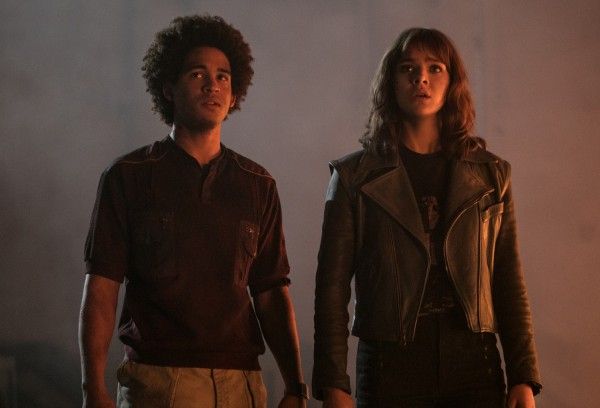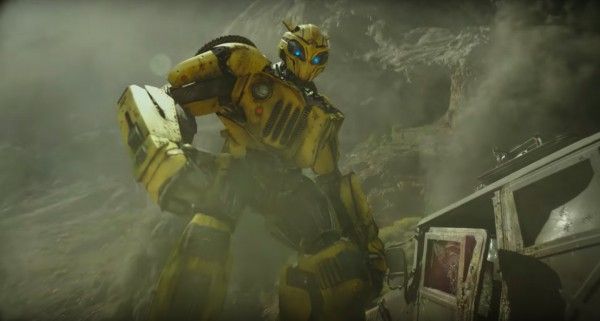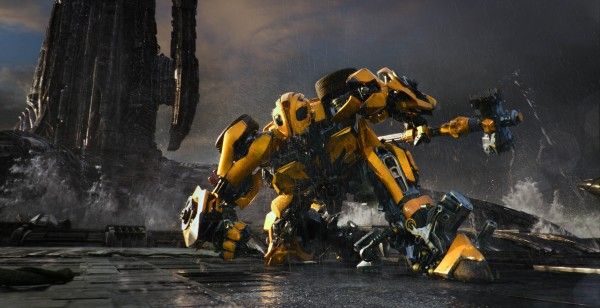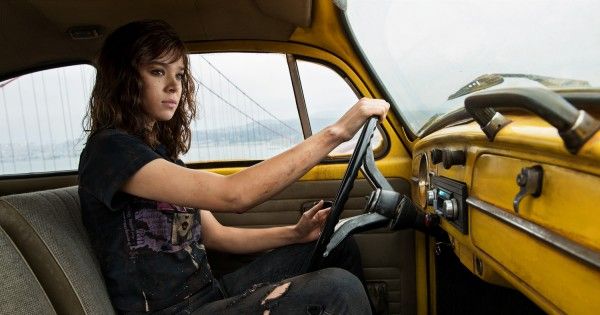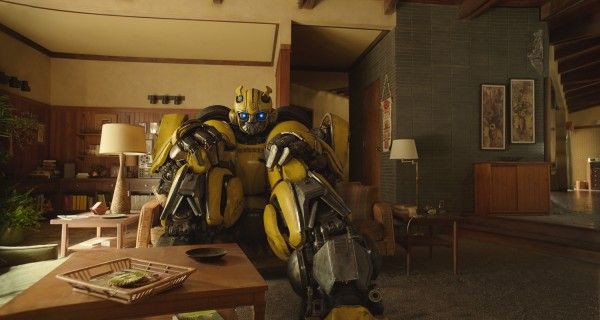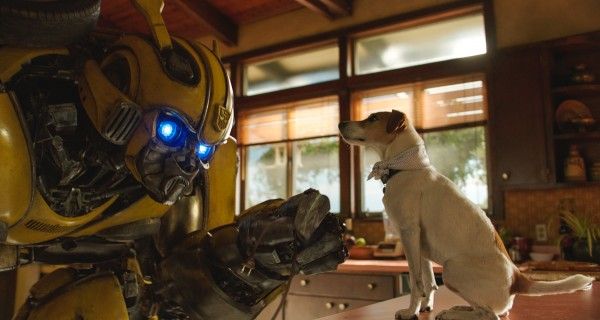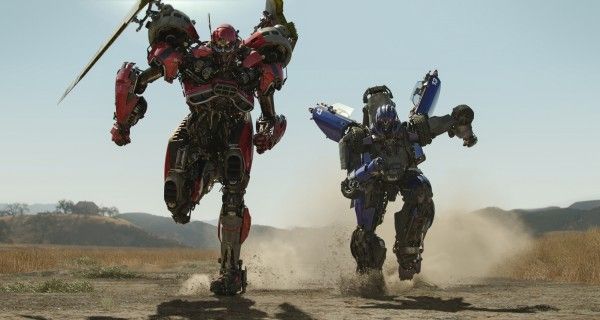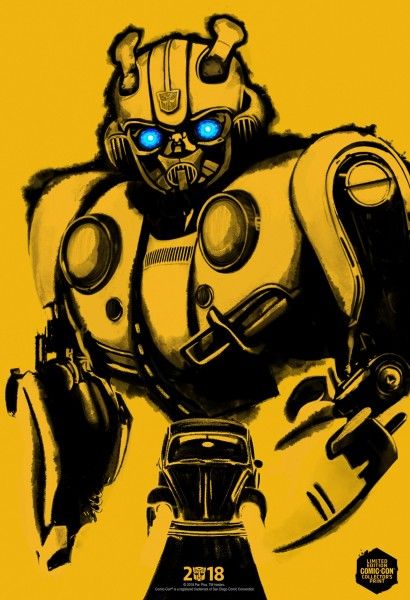From director Travis Knight and writer Christina Hodson, the action-adventure flick Bumblebee is set in 1987, when the young Transformer ends up in a small Californian beach town and in the garage of Charlie (Hailee Steinfeld), an 18-year-old who’s struggling to figure out her place in the world. When Charlie discovers that her junkyard yellow VW bug is no ordinary car, her and Bumblebee end up on a wild adventure that helps them each find their own voice.
During this 1-on-1 phone interview with Collider, screenwriter Christina Hodson talked about how this film evolved, what put her on the radar of the folks at Paramount, what inspired the film’s female protagonist, what Hailee Steinfeld brings to Charlie, how the music of The Smiths became a part of the story, creating personalities for the Transformers, and her favorite moments in the film. She also talked about the process of writing Birds of Prey and that crazy long title, what excites her most about the character of Batgirl (which she’s also writing a film for), working on an original project at Amblin with Steven Spielberg, and how she ended up transitioning from a development executive to a writer. Be aware that there are some spoilers discussed.
Collider: I had so much fun watching this movie. It’s absolutely delightful!
CHRISTINA HODSON: I’m so thrilled. Thank you!
This seems like a different kind of project than what we’ve seen from you, up to this point. How did you get the job writing this? Did you have to pitch your idea and develop it from there, or were you specifically asked to do this?
HODSON: This was born out of the 2015 writers room. The first couple of things that I wrote were psychological thrillers, which is honestly not what I wanted, but it felt like a good place to start. I used to be in development, and I was honestly trying to make smart business decisions. I was like, “They’re make-able, but not very much money, so let’s start there.” Those two movies that I had to my name, that I don’t like to talk about much, are literally the first two scripts I ever wrote, but I always wanted to be writing big franchise tentpole movies. I love big, fun explosions, and fun. My favorite movie is Terminator 2, which I think is the perfect balance of big, huge, fun tentpole, but also really small and intimate. I wrote a sci-fi/action movie in 2014, called The Eden Project, that was a spec that sold, and that was what put me on the radar with Lorenzo [di Bonaventura] and Mark [Vahradian], and the folks at Paramount. I was a part of that writers’ room because I had written in this space before. I’m sure they put me in that room thinking that I would write something focused on big explosions, but I actually am a huge Amblin fan. I grew up as much on those movies – all the ones that Spielberg directed, but also the ones that he produced – and I knew, going into that writers’ room, that I wanted to write a very sweet, small Amblin movie that was a story of a girl and her car. And then, as that room progressed, it was born out of there. At the end of that process, I pitched the movie, and luckily they loved it.
That’s awesome! You completed your first draft back in 2016, so how different was that script from what we see now? What were the biggest changes that happened?
HODSON: Weirdly, not that much. A lot, and not much, at all. I probably can’t go into the secrets of what was in those drafts. When I first began, there was really only one Transformer – one in the prologue, and Bumblebee. We added some stuff and built some things out. We got to explore Cybertron, which was super fun. That came later in the process. Half of it was always very much the same. There were many scenes in the movie that were in the initial pitch, even when it was just a one-page idea, particularly the moments when Charlie and Bumblebee meet in the garage, the family story, her awakening and the emotional throughline with her father, falling in love with Bee, and the way that the two of them heal each other. I always was drawn to that idea of these two broken people coming together and healing each other, and both of them finding their voice. Obviously, it’s very much a coming of age movie for Charlie, but also for Bumblebee. The core pieces were the same, since day one, which has been very gratifying.
Whose idea was it to have a throughline of The Smiths? I very much appreciated that.
HODSON: Basically, when I was 18 and in college, I loved The Smiths. They’re weird and quirky and fun and kind of strange, but also pretty alternative. My best friend went to a screening in New York, and texted me saying, “I was crying when she was air drumming and brushing her teeth because that’s what you used to do!” I love that Charlie basically is slightly off center. She’s not your typical heroine. She’s not mainstream, in many ways. She feels like she doesn’t fit in totally, and she doesn’t quite know where she belongs. Having that bridge and that moment where, at the end, it comes around and Bee is really saying something to her has been the same, since day one. I’ve always loved it.
When so many of these big action movies are centered around boys, what made this the perfect story to center around a young woman, especially one who’s strong and smart and capable, but also weird and different?
HODSON: I’m very happy to hear you say that because that’s very much what I wanted to do. The character Charlie is inspired by my two nieces, one of which is my English niece, who was only three or four, at the time, but was already this fascinating combination of different things. Generally, in these movies, girls, and especially teen girls, tend to be one thing or another. They tend to be the hot one, or the nerdy one, or they just fit into these neat little boxes that none of us actually belong in. Watching my niece grow up was so interesting because she would play with the Transformers boys’ toys, but also wear a tutu. She didn’t belong in any one category. I was like, “I want her to grow up in a world where she sees female characters on screen that represent who she is, which is a nuanced, complicated, interesting, different, other thing.” Between her and my other niece in America, who just recently lost her mom and has an incredibly close bond with her father, those were the two inspirations for that character. It’s weirdly a very personal backstory in a big franchise movie.
I absolutely adored Hailee Steinfeld in this. How did you picture Charlie when you were creating her and writing her, and what do you think Hailee brought to the character?
HODSON: Everything! She is so talented. We were so lucky to get her. She has such an incredibly expressive face. She’s doing such an incredibly difficult thing, essentially acting against nothing. Most of the time, it was just her and a tennis ball, so to be able to emote the way that she does, even without words, is so incredible. The moments where she’s hugging Bee, or touching him, are so tender and sweet. She also is very good at the humor and the action, and the big stakes stuff. That’s a very hard balance to find. When I was writing it, I definitely didn’t have anyone in mind. As a writer, I’m someone who tries to put casting out of my mind, as I’m writing, because you could end up relying on that as a crutch, but I can’t tell you how happy I was when we got her. She’s so fantastic. There’s some overlap in her character in Edge of Seventeen and Bumblebee, and completely by coincidence. I was just like, “Thank god, we have her!” She’s so talented.
What are the challenges in creating and writing a personality for the Transformers characters? Do you write for them like you would any other character, or are there things that you can’t do with them because they’re Transformers?
HODSON: Honestly, it’s not that they’re Transformers characters. Writing for the Decepticons was just so much fun. I love the dynamic between Dropkick and Shatter. The challenge with writing for Bumblebee is that he’s non-verbal, and that’s always super tough, but it’s also a really fun challenge. He is trying to find his voice, over the course of this movie, and I was trying to find his voice while writing this movie, so it was fun to use other forms of communication, like using the head cock or the eyes. Luckily, (director) Travis [Knight] is so unbelievably good at doing those little physical gestures that convey so much emotion. A lot of it was in using music as a universal language to convey tone and emotion, even without words. And then, over the process of the movie, having him learn to use select words from the radio was really fun. It was a challenge, but a good one.
Do you have a favorite scene or moment from the script, that you were most excited to see brought to life?
HODSON: The scene where Bumblebee first transforms in the garage. There’s something nice about the joy that Charlie has already felt with having a car. I remember, as a kid, desperately wanting the independence and freedom of having a car, and she’s already gone through that. She’s annoyed because he’s a clunker, but then she gets in the garage and she’s underneath, and she sees his eyes light up before he just transforms over her. I love that. I love the sweetness of it. And when the kite falls down and goes over his eyes, the way Travis did that scene was incredible. He brought so much emotion and warmth to that moment, it was beyond my wildest dreams. It was one of the first things he showed me in pre-vis, and I was blown away. That’s definitely my favorite.
You have a string of movies that you’re working on with women at the center of them. How cool is that, and was that the eventual plan?
HODSON: I’m living the dream. I’m super happy right now. I’m so grateful that there’s an audience and that there are studios that are willing to take the risk. It is 100% what I wanted to be doing. As a kid growing up, I would watch all of these movies with Harrison Ford and Bruce Willis, and I loved them. They were these big movies with people kicking ass, and being smart and funny and cool and capable, but they were never the women. The women were always on the side. If they were lucky, they would be in the passenger seat, coming along for the adventure. Linda Hamilton in Terminator 2 was a real inspiration in my career. She’s such an awesome character, particularly because in Terminator 1, she’s along for the ride a little bit, and she’s softer or meeker. And then, in Terminator 2, she fucking owns it. What I always wanted to see was women in the driver’s seat, pardon the pun. It’s really hard talking about Bumblebee without using car puns. To have a woman in the role has been awesome. It’s something that I’ve always wanted to do. I’m just very grateful there is an appetite for it right now, and that the studios are into it.
Birds of Prey seems like it would be a bit of a different writing experience, in that we’ve already seen Margot Robbie as Harley Quinn, just not as a main character. What excites you about doing something like that, where you know who the actress is and you know who the character is, but you can explore it so much deeper?
HODSON: That whole process has been amazing because Margot is a producer on the project, so she and I have been working on this, very much hand-in-hand, since day one, about three years ago. We get to do a deep, deep dive. I did a deep dive on the character, in reading the comics. And then, the studio has been incredibly supportive and great about giving us free rein to explore new things. I did the same with all of the characters. I did a huge amount of research and all of the reading, but then liberated myself a little bit and felt free to dive deeper and make these characters something new and fresh that people haven’t necessarily seen.
How will the film compare in time to Suicide Squad?
HODSON: You’ll have to wait and see! That is not one I’m gonna answer, if that’s okay.
How did that film end up with the title of Birds of Prey (And the Fantabulous Emancipation of Harley Quinn)? Whose idea was that?
HODSON: I don’t know if I’m officially allowed to say, but there’s no reason why not. It was an unofficial aka, when I wrote the script. I added it about a year or so ago, almost exactly as it is, just as an aka. I didn’t think we’d ever use it. We’d always used a working title, so I just had it as a cheeky little thing, on the front cover. And then, when we were talking about a title and brainstorming, we all kept drifting back to that one.
It also seems like a title that says a lot about what the tone of the film will be.
HODSON: Exactly!
Is it also a different experience to work on something like Batgirl, where it is an established character, but you can do something new with her?
HODSON: I actually don’t think it is that established. A few people remember Alicia Silverstone doing that, but that movie was not one that is seminal. So, I do feel very free doing that one, and the studio is being super supportive, in letting me dream up whatever I want to dream up.
What most excites you about the character of Batgirl?
HODSON: Many things, but I’m not allowed to talk about that, at all. She’s cool. With all of these characters – the ones that I’m creating and that are original, like Charlie, and the ones I’m getting to inherit and play with – they’re independent, intelligent, capable, interesting and nuanced, and nuanced really is the main thing. They’re not one thing or another. They are flawed, complex, beautiful, wonderful, weird, and fully rounded and fully fleshed out characters. We’ve got so many great actresses out there, that are ready to play these roles, that it’s fun to be writing roles for them.
Does it feel like there’s an extra weight and responsibility when you’re putting your own stamp on a character that already exists, as opposed to creating a character, or do you feel some sense of responsibility for how all of them are received by the world?
HODSON: I feel the responsibility for all of them. I definitely did with creating Charlie because she is the first female lead in one of these movies. There is a responsibility because you never want people to think that it didn’t work because you put a woman in it, or because you let a woman write it. I definitely feel that responsibility. In terms of the non-original characters, it’s the same. You’ve gotta get the right balance between honoring what’s come before you and not dismissing anything that’s preceded you, but also liberating yourself enough that you do feel like you’re creating something new, so that you can really get passionate and inspired, as a writer, and be excited about it.
Was it also important for you to create a young woman who Bumblebee needed the help of, just as much as she needed a friend who saw and heard her?
HODSON: I really, really wanted them to have these two parallel arcs. She lost her father, so she has this hole in her heart. In the beginning of the movie, she wants a car, but has no idea that it’s a car that transforms into a robot, and that he will help heal her and actually bring her back around to embracing her family. I really love the idea of returning to the house, at the end of the movie, and seeing the family healed, in some way. It’s been this insane, crazy journey. Charlie allowing Bumblebee into her heart, and finally being able to say goodbye to him, when she’s really struggled to let go and to say goodbye to her father, because she didn’t have that literal goodbye, is a very healing thing for her.
In much the same way that this is a different project than we’ve seen from you before, this is also very different project than we’ve seen Travis Knight do. What was it like to see how he took what you’d written and turned it into what we see now?
HODSON: It was so much fun. The thing that was wonderful was, when I first met Travis, we had a very similar vision of what the film was. We both were very much inspired by the Amblin movies and that [Steven] Spielberg tone, with that small-town, timeless feel. Even though it’s set in the ‘80s and there’s a lot of nostalgia, we also wanted something that felt timeless. He and I very much saw eye to eye on that. Yes, it’s a different thing from what he’s done, but if you look at his movies, they all have unbelievable heart and wonder and joy in them, and real moments of sweetness, as well as fun and spectacle. To me, he felt like a great choice. I was absolutely thrilled when I got that call saying it was him.
You’ve also been working with Steven Spielberg on an original project at Amblin. What’s it like to work and collaborate with a filmmaker like him?
HODSON: It’s exactly as it sounds. I have to pinch myself, every now and then, that it’s a reality. He is my own #1 hero. I can’t even make sense of it. It was amazing and such an honor. He was wonderful on Bumblebee. That was how I got to know him. It’s beyond anything I could have hoped for. It’s really an honor, a privilege, a pleasure and a joy. He’s still got so much of that joy and wonder, which is what Travis has always tapped into, as well. That’s been amazing to get to be any tiny part of.
You were a development executive before you became a writer. What was it that made you sit down and write that first script, and what got you to keep at it until you got a script produced?
HODSON: I was waiting for my green card. I moved from New York to L.A. I got married, and then I moved, and I had 90 days, whilst my green card was pending, where I couldn’t work or earn any money. I was at home, for the first time in years. I’d been working for so long that suddenly I was jobless and didn’t know what to do, so I sat down and wrote my first screenplay, and then got incredibly lucky. I was too embarrassed to show anyone, for a couple of weeks over Christmas, but when I got back from the Christmas holiday, I gave it to someone who gave it to an agent. My friend said, “Listen, there’s no way that the agent is gonna read it, but maybe an assistant will read it.” That was on a Thursday. And then, on the following Monday, I got a call saying, “We’d love to represent you.” Then, it got optioned, almost immediately. I was very, very lucky. It all happened incredibly quickly, and I didn’t have that weird, painful waiting period that a lot of people do. It all happened very fast.
And then, you unexpectedly became a psychological thriller writer.
HODSON: I never intended to be a psychological thriller writer. That was definitely how I was perceived, when I first appeared on the scene. All I care about is writing characters. I wanted to find a way in, through the lead character, and to date, they’ve always been women. I just love taking a person, who’s often an ordinary person, and putting them in extraordinary situations and seeing what that will bring out of them and what human reactions we’ll see. I just think people are capable of extraordinary things. That’s something that’s always drawn me to everything, and that’s a throughline in all of my work. Although they seem different, there’s almost always a woman at the center of it who brings her own emotional make-up, and then goes through a journey that pushes her into extreme and interesting and extraordinary, and hopefully hopeful and wonderful, although the first two films were not so hopeful and wonderful.
I truly enjoyed Bumblebee so much that it’s made me very excited for Birds of Prey and Batgirl, and everything else that you have to come.
HODSON: I’m very pleased to hear that. Thank you very much. I’m working hard.
Bumblebee opens in theaters on December 21st.

